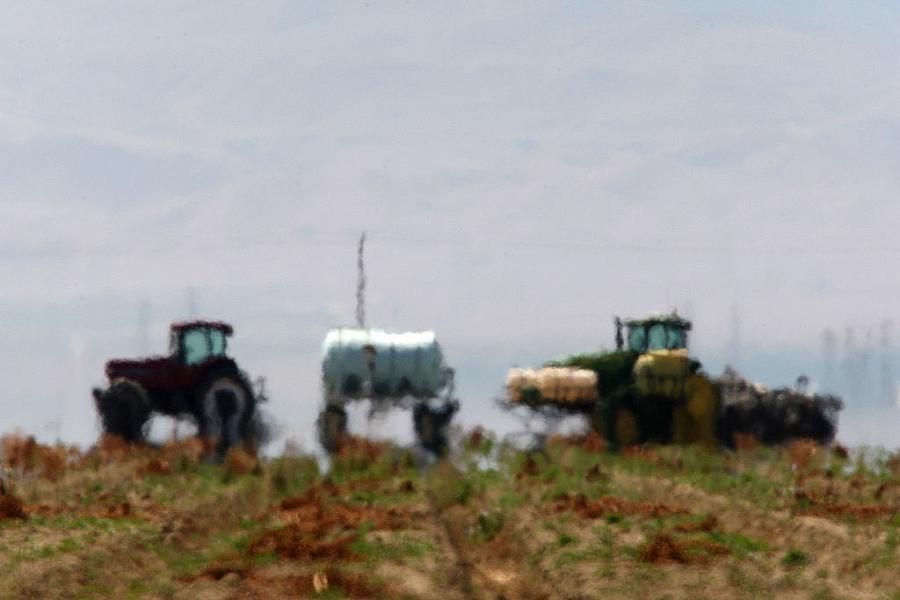Extreme heat is fatal to farmworkers in the San Joaquin Valley. Can regulations keep pace?

(Photo: David McNew/Getty Images)
Triple-digit temperatures have pummeled the San Joaquin Valley at record frequency.
Upwards of 30 100-degree-plus days have been counted in many Valley communities this summer alone — that’s double or even triple the historical (1971-2000) average, according to NOAA data.
If bold, immediate action isn’t taken to address climate change, that number of days could balloon to more than 50 by 2050, according to peer-reviewed estimates.
For most Central Valley residents, that means more time spent in air-conditioned rooms and shady pools. But for some 400,000 farmworkers, the lifeblood of the Valley’s $20 billion agricultural economy, the consequences could prove deadly.
Preliminary data from California’s Occupational Safety and Health Administration (Cal/OSHA) suggests that rural farmworkers already bear the brunt of heat-related illnesses across the Valley floor.
Between June and September of 2018, 235 heat-related complaints were received by Cal/OSHA. Of those, 163 resulted in at least one citation.
More than half of those complaints, 119, originated in the Central Valley (San Joaquin, Kings, Stanislaus, Merced, Fresno, Madera, Tulare and Kern counties).
Statewide, 343 heat-related complaints were received by Cal/OSHA in 2018. That number has nearly doubled from 196 since 2013.
The problem is primed to worsen as climate change drives the mercury ever higher, wreaking havoc on farmworker health outcomes and the country’s No. 1 ag economy.
Heat is recognized as the most dangerous climate event by the National Weather Service, edging out hurricanes and typhoons. At the same time, heat has usurped pesticide exposure as the greatest health concern to farmworkers.
The short-term impacts of heat illness are obvious and frequently extreme: dizziness, nausea, fainting, stroke and even death.
However, the long-term effects are poorly understood. Preliminary research out of UC Davis suggests sustained heat exposure could be especially damaging to kidney health.
The economic impacts of heat-illness and climate change on farmworkers’ earnings is similarly bleak.
UCLA research suggests “exposed workers,” including ag workers, take home 5-10% less pay during 0.5-2 degree hotter-than-average years. That represents a significant chunk for socioeconomically disadvantaged families already struggling to make ends meet.
The San Joaquin Valley already contends with some of the highest poverty rates in the state. In Tulare County, where our newsroom is based, one in four people are enrolled in Cal Fresh – more than any other county in the state.
My 2020 California Fellowship project will investigate measures in place to protect farmworkers from heat-related illness, as well as the biggest challenges faced by officials tasked with enforcing them.
Though California is one of only two states with strict heat regulations on the books, farmworkers in the Golden State — the nation’s most productive agricultural economy – continue to die and suffer from heat illness at an alarming rate.
California farmworkers are entitled to 10-minute breaks for every two hours of work and employers must keep shaded structures and water near workers. Scientific studies show that those measures may not be enough to adequately protect those who harvest much of the nation’s fresh fruits and vegetables.
Last year, University of California researchers released the California Heat Illness Prevention Study, the first of its kind to measure the effectiveness of current heat-illness regulations.
The findings were grim.
Central Valley farmworkers told researchers that they mostly understood heat prevention guidelines but were hesitant to follow them because doing so would affect their bottom line. More time resting and drinking water means decreased earnings, especially if they are being paid by the piece, as is common for the region’s biggest commodities.
Other farmworkers feared that taking necessary breaks could lead employers to question their productivity and work ethic, threatening their perceived job security.
As summers become increasingly hotter and longer, combatting these attitudes at all levels of the farm economy is essential for preserving the lives and livelihoods of more than 800,000 farmworkers in California, the study’s authors concluded.
Our project for the Visalia Times-Delta will seek out progressive farms that exceed current regulations to highlight existing solutions to a deadly problem. At the same time, we will illustrate the consequences of failing to protect farmworkers from extreme heat though first-person accounts from those on the front lines of our food system.
Finally, we intend to host a community forum that will bring together Central Valley farmers and farmworkers, policy makers and public health officials to create dialogue and find solutions that can be implemented to protect the industry’s most vulnerable employees.

